365 Memorial Days per Year - Ancestor Worship Around the World
PRIMITIVE - Friday, May 26, 2017By Glen Joffe
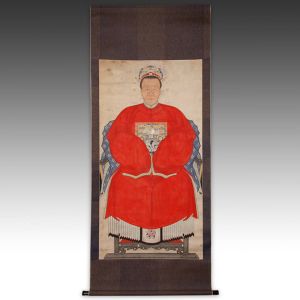 |
|
Google “Ancestor Worship” and aside from 2,260,000 results delivered in slightly over half a second, you will immediately find the following description: “Ancestor worship is a religious practice based on the belief that deceased family members have a continued existence, that the spirits of deceased ancestors will look after the family, take an interest in the affairs of the world, and possess the ability to influence the fortune of the living.” We don’t know who wrote this description, but it is apt for the sake of this blog, albeit a bit generic. Ancestor worship is everywhere in the world. We may not always acknowledge it as a religious practice or a form of worship, but each time we look at a photo of a dear deceased relative or even an important historical figure, and ask what they would do under a particular set of circumstances we are engaging in this sort of veneration, or worship, which could also be described as a connection. In this regard, even the act of thinking fondly of the departed may be interpreted as ancestor worship. One real question not answered in the above description is how do our ancestors advise and guide us on our journey in the physical world? It presumes a belief in ancestor worship in the first place; and a willingness to hear voices now silenced. Not everyone may be so sensitive, but we can all make a conscious decision to recognize the influence and importance ancestors play in the daily lives of the living. For example, it is played out once per year in America on Memorial Day, daily when politicians and pundits in the USA talk about “the founders,” when we think fondly about our parents or grandparents and some trait we may share, or for that matter, gaze lovingly at a picture of a departed pet. Yes, even our deceased beloved pets may be venerated.
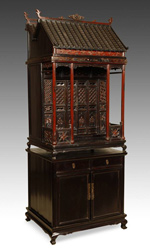 |
|
Although not mandatory, one might say memorials are integral to the practice of ancestor worship. Memorials may take an almost unlimited variety of forms: buildings, sculptures, gravestones, gates, monuments, altars, plaques and even places. They are all accepted forms of memorials. Yet, a memorial does not have to exist physically, For example, Memorial Day exists in time, not space, to honor those who have died in service to our country; a sort of collective ancestor worship. Memorials do not even need to relate to ancestor worship. In other words, they can honor something other than the deceased. The Bill of Rights memorializes the rights of citizens, not the people who made the ultimate sacrifice to see it respected or enforced. While memorials commemorate people, places and ideas, more than anything else they focus our memory on something, sort of like a lens on the process of recollection. Although ancestor worship doesn't require anything other than the intention of the living, having a focal point like a memorial is often helpful in honoring those who have gone before.
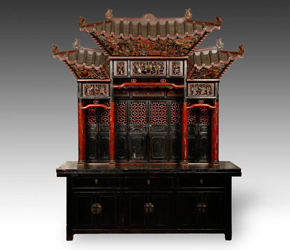 |
|
compound altar with heavily ornamented canopy and bottom cabinet; PRIMITIVE ID# F0901-094 |
In this discussion of ancestor worship we will begin with China, for it was Confucius (551-479 BCE) who first characterized ancestor worship as a cohesive concept around 2,500 years ago. He called it "filial piety," which became manifest as ancestral veneration, the idea that the living must respect and remain loyal to the deceased while providing them with happiness and well being in the afterlife. Although the concept of ancestor worship could be found in other areas of the world - for example, Egypt - nowhere did it become more deeply rooted as an everyday practice than in China, Confucius' home. As a concept it was destined to become an integral part of Confucianism, Taoism, Buddhism, and a host of other folk religions.
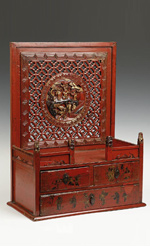 |
|
In China, it was widely believed that upon a person’s death part of their soul rose to heaven while another stayed on earth to reside in a spirit tablet; in essence, a placard acting as an effigy of the deceased ancestor. In a sort of "Grand Bargain," living descendants would protect the graves of their ancestors and give offerings to them at an altar, and in turn, their ancestors would influence the gods to bring the family good fortune, health, wealth, wellness, and prosperity. Traditionally, the Chinese family unit was composed of the deceased as well as the living; and ancestor worship acted as the cornerstone of family unity and solidarity. Throughout Chinese history countless spirit tablets and altar tables have been lost; but the belief responsible for their creation has never waned.
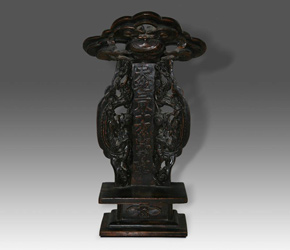 |
|
In China, the altar acted as a functional memorial and held special importance within the household. It could be viewed as the residence of ancestral spirits. In larger estates, a whole hall might be dedicated to ancestors with the altar located in a place of honor. Altars varied in style from classic altar tables to cabinets, and even to those that looked like homes themselves, architecturally correct in every way. This was deliberate as many altars were crafted to resemble clan estates so spirits would feel comfortable in their own homes. Some altars were decorated with intricate carvings of mythical animals and birds, wise Confucian masters, and auspicious characters and symbols. Although many of these architectural altars have been lost throughout time, those that survive illustrate an undeniable level of craftsmanship. It is simply amazing to think of the many generations of prayer and care witnessed by these altars. It gives them a sacred patina.
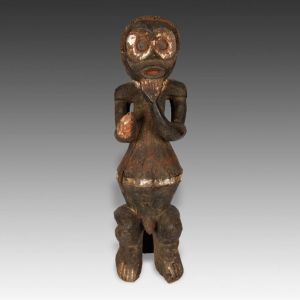 |
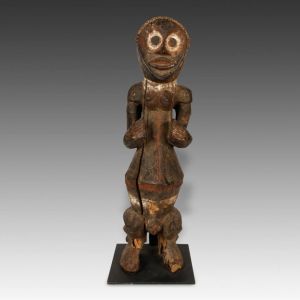 |
||
Ancestor worship was a common custom throughout all of Asia. Traditional households in Japan often contained altars dedicated to ancestors; and although many families don’t have space for altars today, they still celebrate Bon, an annual festival dedicated to welcoming family spirits home for several days in the summer. In Korea, Jesa is a ritual memorial service held to honor a family’s ancestors. It is performed with offerings and festivities. In Vietnam, the death anniversaries of ancestors are traditionally recognized and considered more important than their birthdays! Just like China, many Vietnamese worship their ancestors and have altars in their homes regardless of any religion they may practice. In other words, ancestor worship is as much a social as a religious phenomenon.
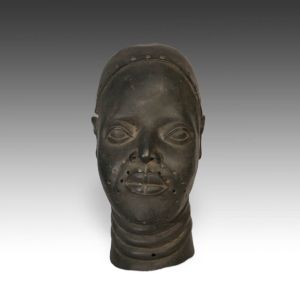 |
|
In Africa, especially in the west and southeastern cultures, ancestor worship is prevalent; some might argue as much a part of daily life as eating or working. In fact, ancestor worship forms the backbone of many religions found on the African continent. For example, in present day Nigeria the Yoruba tribe is found. The Yoruba practice one of the oldest known religions called Ifa. Ifa forms the basis for almost all of the Afro-Carribean religions such as Santeria in Cuba, Voodoo in Haiti, Candomble in Brazil, and Lucumi in Colombia. When the slaves were brought to the new world they were typically baptized on ship or shore and from then on prohibited from practicing their religion. However, the slaves were industrious and they disguised their Gods, known as Orisha, as Catholic Saints. This is known as a syncretization; and this syncretization became further altered and flavored by local custom and geography until the religion itself became known by different names in different countries. Strip away the local and Catholic aspects and what surfaces is an ancient religion with three parts: 1) Orisha worship, a belief in “Gods” who are more than human, but less than the one single creator God; 2) divination; and 3) ancestor worship. The story of Ifa illustrates one way a specific form of ancestor worship spread throughout the world.
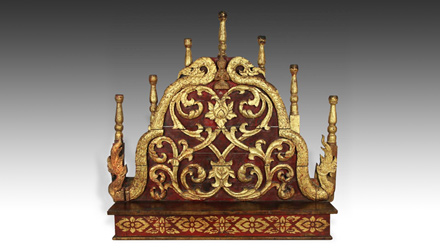 |
There are so many religions in the world it would be impossible to list them all here. At last count, approximately 4,200 religions were counted throughout the world. It would be fair to say; in the vast majority ancestor worship plays some role in the religion's practice. Ancestor worship should not be viewed as religion; but instead, as a facet of religion and more importantly as a function of belief the religion may promote. It is belief in the ancestors and their power (sometimes viewed as greater than their power as mortals) that drives ancestor worship worldwide. Not addressed in this blog are the many means by which ancestors are accessed, but we can state with certainty some of the most compelling objects and art forms made by humankind are memorials and other objects relating to ancestor worship. These include altars and altar tables, paintings and portraits, sculpture, textiles, photographs, a seemingly endless array of objects such as incense burners, incense, and candles, and too many more to list or illustrate here because all of these seem to come in an infinite variety of types, forms and modalities from an exceptionally wide variety of cultures.
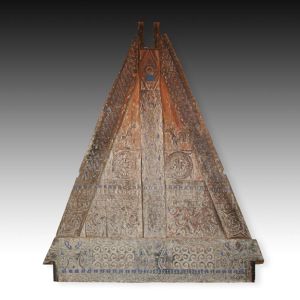 |
|
Some may think ancestor worship and family altars are exclusively Eastern traditions, but that’s not exactly correct. Have you ever placed family photographs on top of a cabinet, tabletop, in a bookcase or gathered them together on a wall? Were any of these photographs dedicated to deceased family members; grandparents, great grandparents, brothers, sisters, aunts or uncles? Would you call such an assemblage an ancestor altar? Many people would; and if you did place such photographs together, how did you feel when you examined them? Ancestor worship may sound ritualistic and religious from afar, but isn’t it the recognition of family ties more than anything else. Recognizing these ties often brings relatives together to gather and talk about times they shared with their family. Whether in the East, West or anywhere else, the sentiment expressed by ancestor worship is essentially the same for us all. No matter how it is expressed, in quiet reflection at the foot of an altar, at a festival or ceremony, or simply through the examination of photographs and paintings, it results in actions that reinforce family ties, love, and appreciation. Whether performed by older or younger generations, intermittently or frequently, individually or in a group, or in the expectation of receiving some benefit or reward such as health, wealth or protection, ancestor worship is a means to stay connected, and some might even argue, to tap into the collective wisdom of those who have gone before. In its most modern iteration, ancestor worship has been distilled to a simple concept - the idea of respectfully honoring the deceased to bring well-being to the living. It is not an idea whose time has come because it has been around for such a long, long time. It is an idea that may be appreciated as much by the living as the deceased.